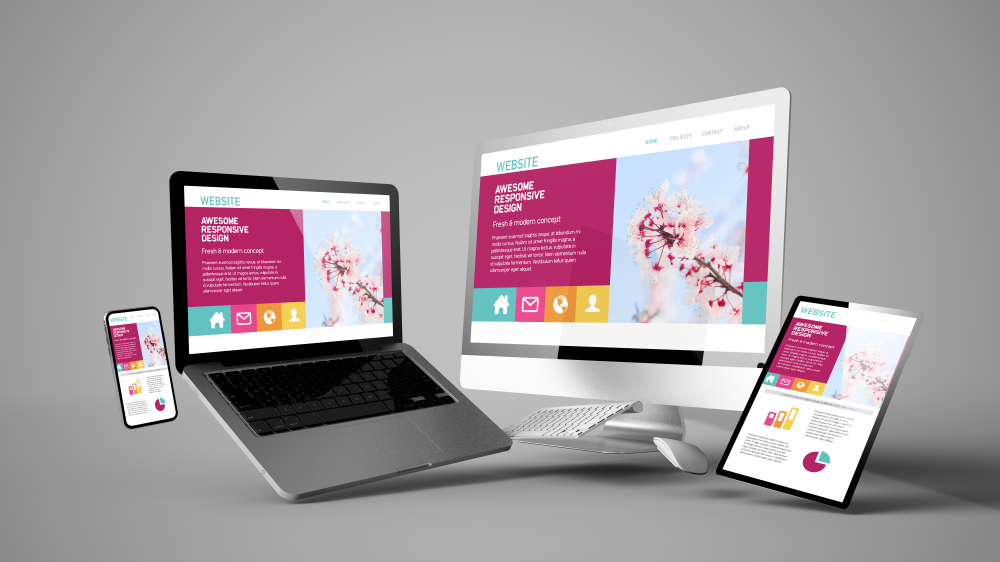How to Design a Nursing Home Website That Stands Out
If you’ve ever paused to think about what makes a nursing home website truly effective, the answer is simple: connection. A website isn’t just a digital placeholder; it’s the first handshake between a potential resident—or their loved ones—and your facility. It tells a story. It reassures. It invites trust. And when done right, it does all this while staying easy to navigate. But what separates a great nursing home Rochester NY website from the rest? Let’s dig in.
Begin with the User in Mind
Imagine this: someone searching for a nursing home is likely feeling overwhelmed. They’re balancing emotions, endless research, and crucial decisions. That’s why a nursing home website must be designed with empathy. It starts with understanding the audience’s needs. Families are looking for clarity, reassurance, and straightforward answers.
The layout should feel natural and welcoming. No one wants to click through a maze of dropdown menus to find the services offered. Think simplicity. A well-organized navigation bar with categories like About Us, Services, Amenities, Testimonials, and Contact keeps everything accessible.
And don’t forget speed. A slow-loading website is like a long line at the DMV—it instantly turns people away. Quick-loading pages mean less frustration and a better first impression.
Tell a Story Through Design
Ever noticed how some websites feel sterile? Nursing homes can’t afford that. The design should feel warm and personable, reflecting the care provided. Use inviting colors—soft blues, greens, and neutrals work wonders. They’re calming, yet professional.
Images are another vital piece of the puzzle. High-quality, real-life photos of the facility, caregivers, and residents bring authenticity. Stock images might save time, but they lack the personal touch families crave. Pair those photos with heartfelt captions that highlight the nurturing environment.
Even small design choices, like rounded buttons or gentle transitions, can make the site feel more approachable. A good rule of thumb? If the design makes you feel at ease, it’s working.

Content that Builds Trust
When people land on a nursing home website, they’re not just looking for information—they’re seeking peace of mind. Content plays a huge role here. Clear, concise, and engaging copy is non-negotiable.
Start with the homepage. A powerful opening message can instantly set the tone. It might be something like: “Where compassionate care meets a vibrant community.” This tells visitors who you are and what you stand for in one breath.
Beyond that, transparency is key. Include detailed information about services, staff qualifications, and safety measures. Families want to know: What kind of care is provided? What sets this nursing home apart? The more questions answered upfront, the better.
Accessibility Matters
An often-overlooked detail in website design is accessibility. But for nursing homes, it’s non-negotiable. Consider this: many users visiting the site might be seniors themselves, or family members who are less tech-savvy.
Large, readable fonts are a must. Avoid overly decorative typefaces that are hard to read, and stick to clean, sans-serif fonts. High contrast between text and background—think black text on white or light gray backgrounds—makes reading effortless.
For added accessibility, ensure the website supports screen readers and includes alt text for all images. And don’t forget mobile users! A responsive design ensures the site looks and works great on any device, whether it’s a desktop or a smartphone.
Call-to-Action: Clear and Gentle
Every website needs a call-to-action (CTA), but in the context of a nursing home, it should never feel pushy. Instead, think of it as an invitation.
A button like “Schedule a Visit” or “Request More Information” is simple and effective. Place CTAs strategically—on the homepage, at the bottom of service pages, and even within testimonials. They should feel like natural next steps, not abrupt demands.
Let Testimonials Do the Talking
Nothing builds trust faster than hearing from others who’ve been in the same shoes. Testimonials and reviews give your nursing home credibility. They’re the virtual equivalent of word-of-mouth recommendations.
Create a dedicated section for testimonials, and if possible, include photos of the residents or their families (with permission, of course). Video testimonials can be even more impactful—they show real people sharing their experiences, which makes them harder to dismiss.

Don’t Skimp on SEO
Search engine optimization (SEO) might sound technical, but it’s the key to making sure people can find the website in the first place. A beautiful site won’t help much if it’s buried on page three of Google search results.
Keywords like nursing home near [city] or senior care facility in [region] should be naturally sprinkled throughout the site. But don’t overdo it—Google penalizes keyword stuffing. Instead, focus on creating valuable content that answers common questions, like “What should I look for in a nursing home?”
Include a Blog
Speaking of content, a blog can work wonders. It’s a space to provide advice, share updates, and establish authority. Topics like “How to Choose the Right Nursing Home” or “5 Ways to Ease the Transition for Your Loved One” resonate with readers. Plus, regular updates signal that the website—and by extension, the facility—is active and engaged.
Contact Information Front and Center
This might seem obvious, but you’d be surprised how often contact details are buried. A nursing home website should make it easy for visitors to get in touch. Include a phone number, email address, and physical location at the top and bottom of every page.
Adding a contact form is another great option. Keep it simple—name, email, phone number, and a message box. Too many fields can feel like a chore.
Make It Personal
In the end, a nursing home website isn’t just about information; it’s about connection. Every detail, from the design to the content, should reflect the care and compassion families can expect from the facility.
Done right, the site becomes more than a resource—it becomes a bridge, turning curiosity into comfort and doubt into trust. So, if you’re creating or revamping a nursing home website, remember: it’s not just a website. It’s a lifeline for families searching for answers, and it should feel as warm and welcoming as the care you provide.





